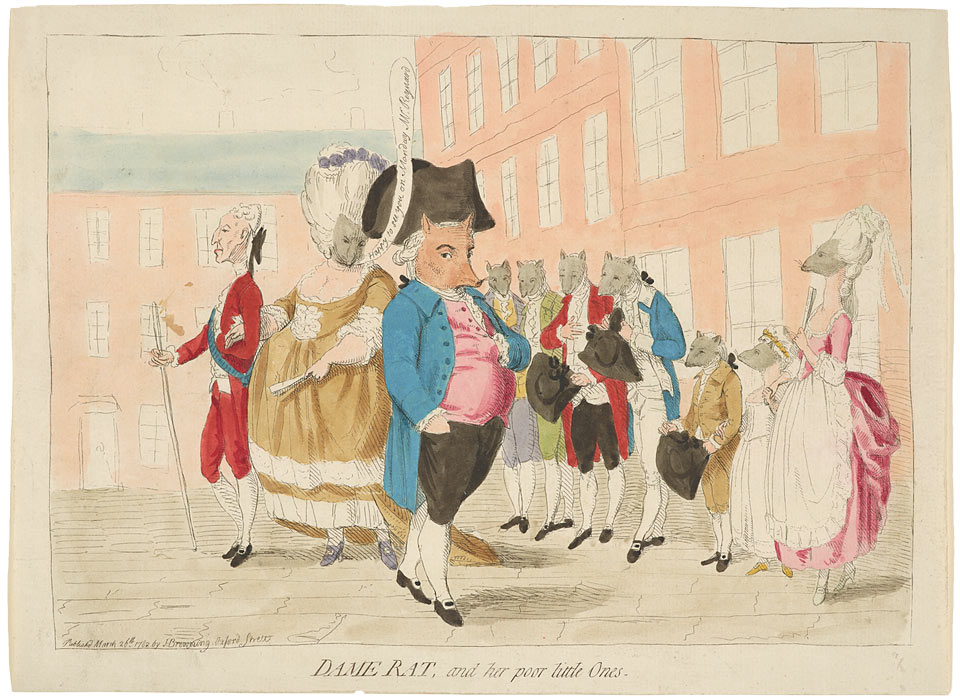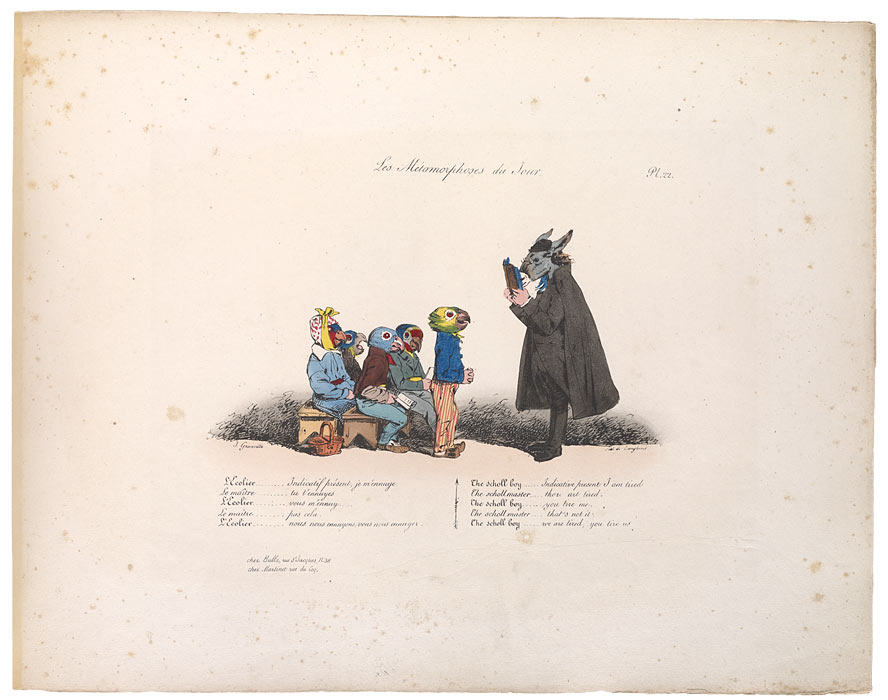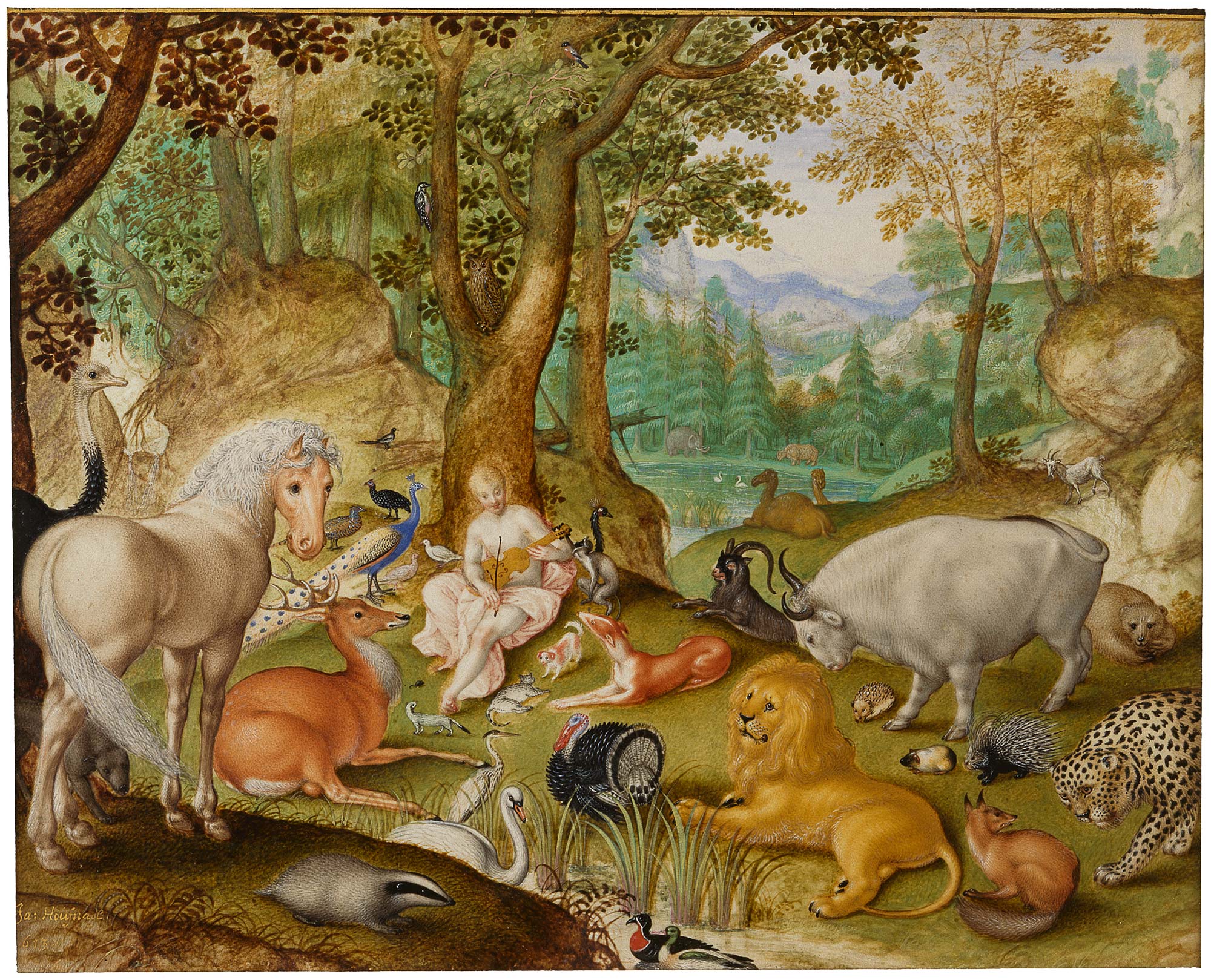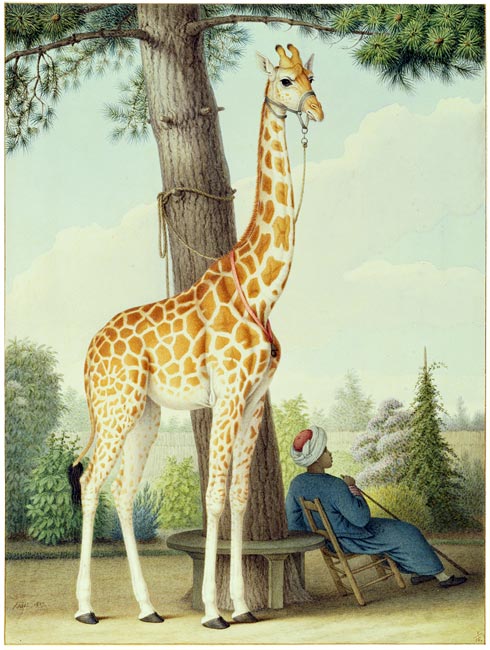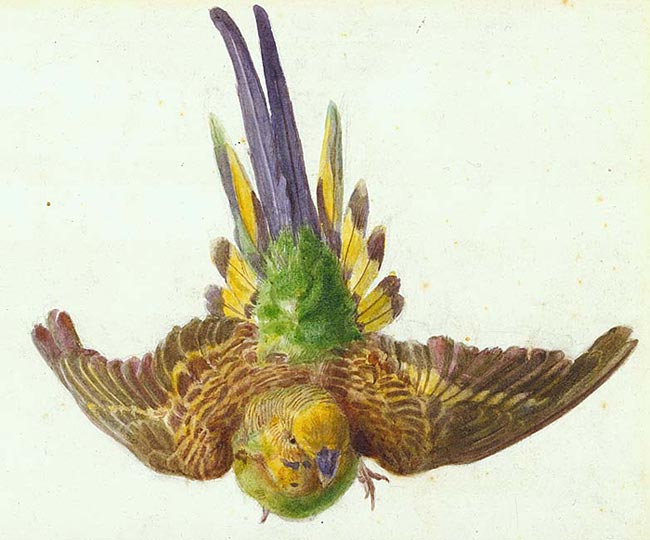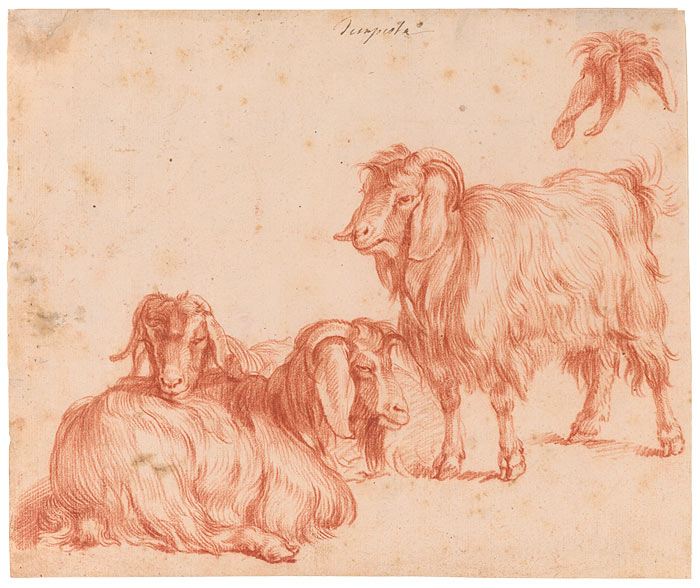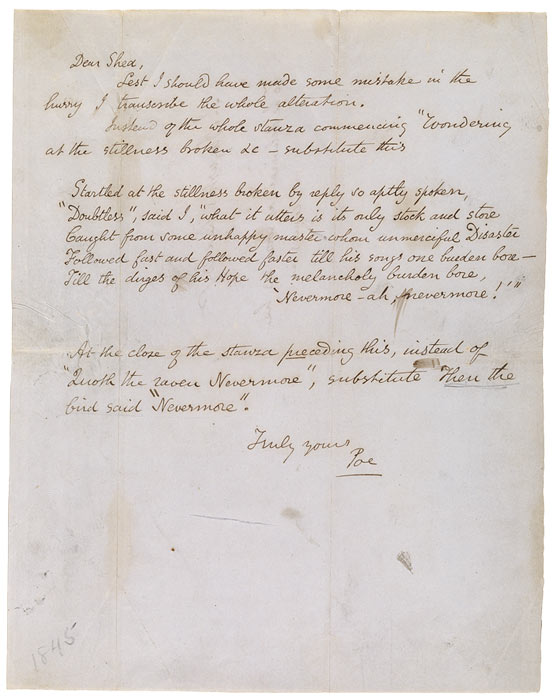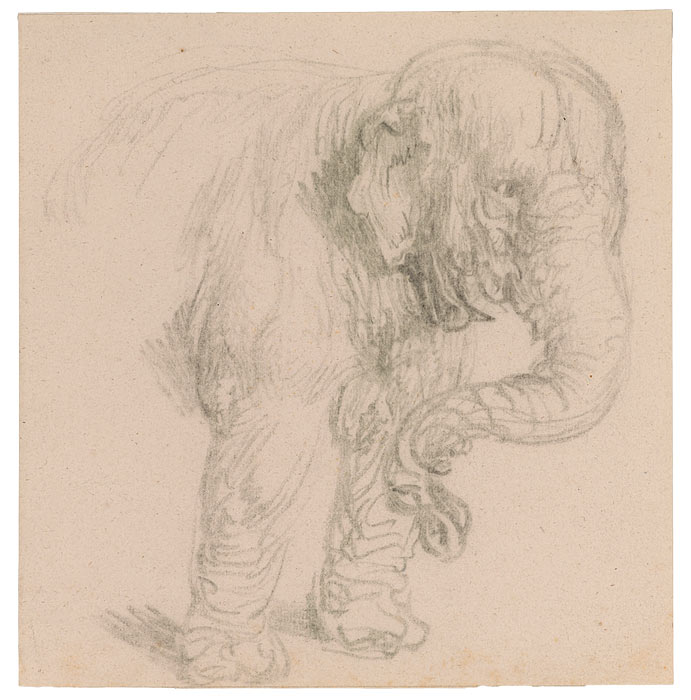Plan your visit. 225 Madison Avenue at 36th Street, New York, NY 10016.
Plan your visit. 225 Madison Avenue at 36th Street, New York, NY 10016.
In the Company of Animals: Art, Literature, and Music at the Morgan
Dame Rat, and Her Poor Little Ones
London: Publish'd March 26th 1782 by J. Browning, Oxford Street
Bequest of Gordon N. Ray, 1987
FOX AND RATS
The English caricaturist James Gillray often used animals to convey the prevailing opinions of the day. The central figure here is one of Gillray's repeated targets, the prominent politician Charles Fox. He stands with his back to Lord Hertford, who ignores him, while Hertford's rat-headed wife and children greet him. A new government meant that Hertford was forced to resign his post as lord chamberlain, the organizer of official functions for the royal household. The newspapers accused Lady Hertford of trying to curry favor with Fox. Rats, like foxes, were thought to be cunning and duplicitous.
Les métamorphoses du jour
Paris: Chez Bulla et chez Martinet, 1829
Bequest of Gordon N. Ray, 1987
Schoolchildren and Teacher
This hand-colored book was the publication that brought the French caricaturist J. J. Grandville to prominence. The seventy scenes of humans with animal faces playing out scenes from Parisian middle-class life highlight society's absurdities. Here the parrot children, who are meant to demonstrate their rote learning of verbs, respond to their donkey teacher, his nose buried in the book, with a cheeky reply: "we are tired; you tire us."
Orpheus Charming the Animals
Signed and dated at lower left in gold, Ja: Houfnagl / 1613.
Purchased on the Sunny Crawford von Bülow Fund 1978
Orpheus Charms the Animals
In Greek mythology, the hero Orpheus was known for his musical abilities, capable of charming any living creature. Orpheus and his animals were a popular subject for artists when Hoefnagel, a court painter to Rudolf II in Prague from 1602 to 1613, did this watercolor. The popularity reflected a general interest in encyclopedic representations of animals. Hoefnagel was known for his accomplished depictions of natural history subjects, and this background was put to good use here. Orpheus's companions include a guinea pig, ostrich, porcupine, and turkey as well as an elephant and rhinoceros across the lake.
Study of the Giraffe Given to Charles X by the Viceroy of Egypt, 1827
Signed and dated, in pen and brown ink, at lower left, hüet 1827; numbered for scale at lower right, 1/16.
Purchased on the Sunny Crawford von Bülow Fund, 1978
A Parisian Giraffe and her Caretaker
This drawing, most probably from life, is of the famous nineteenth-century giraffe known as Zarafa with Atir, her Sudanese caretaker. Atir lived with Zarafa for eighteen years in the Jardin des Plantes and "slept within scratching reach of her head." A political gift from the Ottoman viceroy of Egypt, Muhammed Ali, to Charles X of France, the giraffe was part of an attempt to convince the king not to interfere in the war between the Ottoman Empire and the Greeks. Her journey from Sudan to Paris took two years and entailed two boat rides and a 550-mile walk from Marseilles to Paris. It is estimated that over 100,000 people—an eighth of the population of Paris at the time—came to see her.
Parakeet in Flight
Gift of Mrs. Vincent Astor
Edward Lear's Bird
The affinity between serious scientific study of animals and flights of the imagination is epitomized by the works of the English artist and writer Edward Lear. Best remembered today for his nonsense poetry, especially the poem The Owl and the Pussycat, Lear began his career as an "ornithological draughtsman" employed by the Zoological Society of London. His first publication, printed when he was nineteen years old, was Illustrations of the Family of Psittacidae, or parrots, in 1830, to which the drawing of the parakeet is likely related.
Two Recumbent Goats and a Third Standing
Purchased by Pierpont Morgan, 1910
Studies Of Farm Animals
The twentieth-century American artist Alexander Calder wrote, "the study of any domestic animal helps in drawing the rarer and wilder ones" Mulier, a Dutch artist who spent much of his life in Italy, has mastered the shaggy coat and penetrating stare of the goat.
Letter signed Poe: New York, to John Augustus Shea, 3 February 1845.
Purchased by Pierpont Morgan, 1909
Revising "The Raven"
This letter contains Poe's last-minute revisions to the tenth and eleventh stanzas of "The Raven." The poem was to be published the next day in The New-York Daily Tribune. These revisions are the earliest surviving portions of "The Raven" in Poe's hand. In his "Essay on Poetry," Poe wrote that he wanted a creature for this poem that was "capable of speech, and very naturally, a parrot, in the first instance, suggested itself, but was superseded forthwith by a Raven as equally capable of speech, and infinitely more in keeping with the intended tone." The raven, "the bird of ill-omen," represents "Mournful and Never-Ending Remembrance," in this case, of a dead lover.
Forequarters of an Elephant
Purchased by Pierpont Morgan, 1910
Rembrandt's Elephant
Rembrandt made several elephant sketches. The subject is thought to be a female elephant named Hansken, who traveled from Ceylon to Amsterdam in 1637. The artist paid close attention to the texture of her skin and faithfully depicted her without tusks: female Asian elephants often have small or broken tusks. She stands serenely in this image but was trained to perform various tricks to entertain the crowds who paid to see her. One observer wrote, she "dances in circles, fences an opponent with a sword, kneels... puts on a hat and takes it off."
Verscheyde soorten van gedierten
Haarlem: Margareta van Bancken..., 1690
Purchased on the Ball Fund, 1985
Affordable Animals
Printed on cheap paper and, at a penny or two, meant to be affordable to the general public, this Dutch catchpenny print from the seventeenth century is in remarkable condition. Printed from twenty-four small woodblocks, the print's diverse animal subjects are meant to be instructive as well as amusing, a child's introduction to natural history. The most exalted exotic animals, the lion and elephant, appear first, followed by the cow and horse, two animals central to artistic depictions of Dutch rural life.

